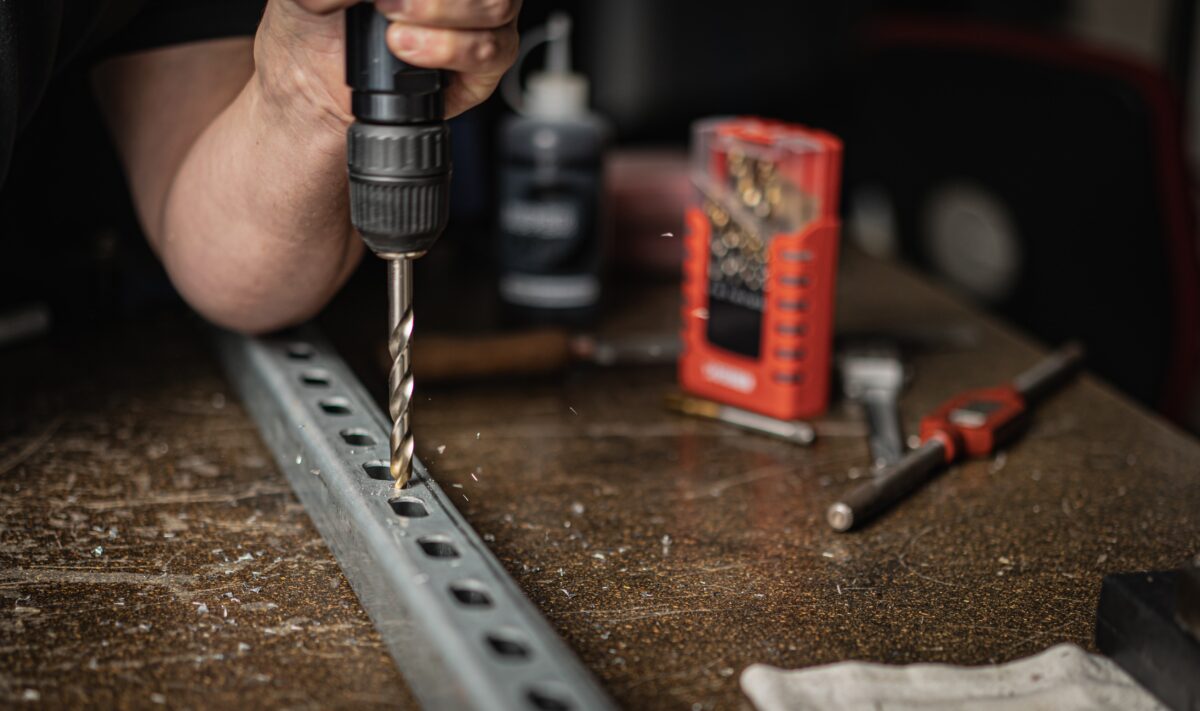Drilling can cause heat. If you don’t use the correct bit, it will be faster for stainless steel to harden due to heat, making it much harder to finish drilling. After years of experience as a metalworker, I’ve found the best drill bit types, lengths, and flute designs for stainless steel.
Whether you are a homeowner or a metalworker, this article will help you learn what type of drill bit to use on stainless steel.
What Drill Bit to Use on Stainless Steel
You can use specialized bits such as high-speed cobalt, black oxide-coated, or titanium nitride-coated drills for working on stainless steel for efficient drilling. Another option is to use carbide-tipped drills or drills made entirely of carbide for extremely hard inox.
Selecting the right bit is essential when drilling holes in inox to ensure accurate and efficient drilling. They constitute a group of drills specially designed for this material, each having its particular composition and properties, which we will see below.

Specialized Bits for Stainless Steel
Specialized drill bits designed for hard, dense metals are necessary to overcome these hurdles when drilling inox. Standard high-speed steel bits lack the endurance for drilling it in most cases. Here are the most capable inox bit types:
Cobalt Bits
These high-speed steel bits are alloyed with cobalt for enhanced hardness and thermal resistance, critical traits for inox work. Cobalt drill bits last longer than standard versions before dulling.
Black Oxide Bits
A black oxide surface coating further boosts high-speed steel and cobalt bit wear protection. The slick coating also prevents a built-up edge. This is why I use black oxide bits for drilling most types of metals.
Carbide-Tipped Bits
Carbide refers to tungsten carbide, an extremely hard material welded onto the cutting edges of bits. Carbide tips can drill for far longer in inox before abrasive wear.
Solid Carbide Bits
Whole bits entirely made of solid carbide represent the ultimate hardness and durability for inox drilling. They are pricier yet unmatched in longevity.
Titanium Bits
These costlier bits use titanium nitride (TiN) coating for a highly wear-resistant and durable drilling surface. Titanium bits offer excellent longevity in inox.
Flute Design of Drill Bits for Stainless Steel
When drilling inox, a bit with a specific flute pattern can make a noticeable difference in performance. I recommended using these bits with the following designs:
- Self-centering flute: This design incorporates a concave shape at the bit’s tip. It helps to automatically center the bit on the workpiece, reducing the chances of the bit slipping. It is particularly useful when drilling through thin sheets of inox.
- Split point flute: This design features a split tip that helps to reduce the wandering of the bit when starting to drill. It enhances precision and ensures that the bit stays centered. This flute pattern also aids in chip evacuation, preventing clogging and overheating.

Using drill bits with the appropriate flute design can improve drilling accuracy, minimize wandering, and achieve cleaner holes.
Length of Drill Bits for Stainless Steel
There are two elements to consider when deciding the length of a bit to use on inox. It should be determined by its thickness and the depth of the hole required. Following are some general guidelines:
- Match the thickness: The drill bit length should be equal to or slightly longer than the thickness of the inox being drilled. This guarantees that the bit can thoroughly penetrate the material.
- Consider the hole depth: If you need to drill a hole to a specific depth in the inox, choose a bit long enough to reach that depth comfortably. Avoid using one that is longer than necessary, as it can increase the risk of the bit bending or breaking.
It is critical to strike a balance between the drill bit’s length and the drilling’s practicality.
Related Questions
What Speed Should You Drill Stainless Steel?
When drilling stainless steel, start slow, around 500 RPM, for smaller bits under 1/2 inch diameter. Increase speed as the diameter of the drill increases. A good rule of thumb is to reduce spindle speed by 100 RPM for every 1/8 inch increase in drill diameter over 1/2 inch.
What Is the Best Way to Drill a Hole in Inox?
To drill a hole in corrosion-resistant steel, mark the location, secure the piece, use a smaller pilot hole, apply cutting fluid, and drill at a slow speed initially. Gradually increase speed, maintain pressure, clear chips, and use safety precautions such as wearing glasses and gloves.
Will a Regular Drill Bit Work on Inox?
Using a regular bit on inox works for small-scale drilling, although this may result in slower progress, increased heat buildup on drill bits, and reduced bit lifespan.
If you anticipate drilling frequently or need to drill larger diameter holes, investing in specific corrosion-resistant steel drill bits is advisable to achieve better results.
Conclusion
Drilling clean, precise holes in inox requires specialized bits designed to overcome its hardness. Using the wrong bit can save the job. Quality cobalt, carbide, or titanium bits, proper size selection, and drilling technique ensure corrosion-resistant steel drilling success, saving time, money, and headaches.
